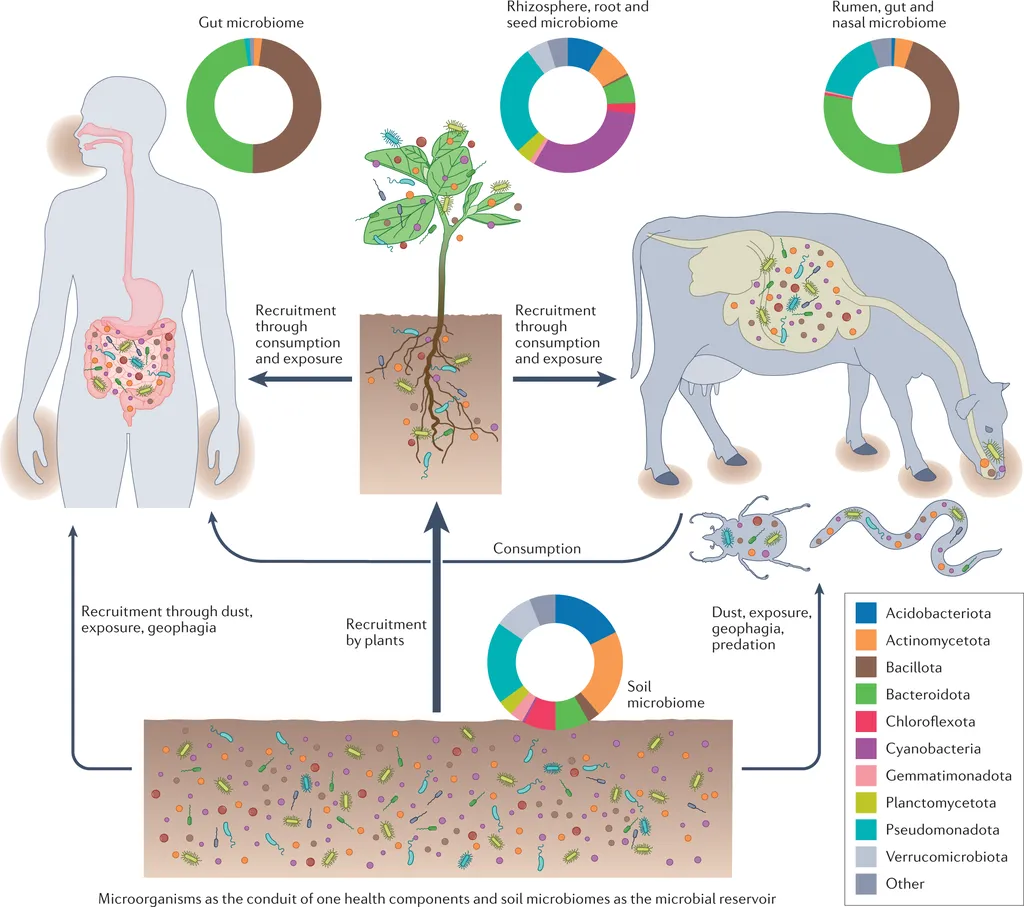In the heart of Venezuela’s semi-arid Andes, a groundbreaking study is challenging our understanding of soil health and opening new avenues for sustainable agriculture. Researchers have discovered that Glomalin-Related Soil Proteins (GRSP), long thought to originate solely from mycorrhizae, may also be produced by a consortium of soil microorganisms. This finding, published in *Discover Soil*, could revolutionize the way we approach soil management and plant productivity.
The study, led by Erika Lorena Blanco from the Universidad Nacional Experimental del Táchira (UNET), focused on the cultivation of Allium cepa L., commonly known as onion. The team bioinoculated the soil with a microbial consortium (MC) of Rhizobium tropici and Bradyrhizobium japonicum, both known for their plant growth-promoting effects. The research was conducted under varying conditions of inorganic fertilization and water deficit, providing a comprehensive look at how these factors influence GRSP production.
“Our results show significant differences in the number of proteins between treatments, suggesting that the microbial consortium is part of the microorganisms that can produce GRSP,” Blanco explained. This discovery is a game-changer for the agriculture sector, as it highlights the potential of biofertilizers to reduce the reliance on inorganic fertilizers, thereby improving soil health and promoting sustainable agriculture.
The study employed an innovative approach, using an extractant (NaOH/H2O) to purify the protein extract and the universal Bradford method to quantify the proteins. The proteins were then visualized using SDS-PAGE, a technique that separates proteins based on their molecular weight. The results were analyzed using ANOVA, a statistical method that compares the means of different groups to identify significant differences.
One of the most striking findings of the study was that intensive tillage did not affect the GRSP content. This is a crucial insight for farmers, as it suggests that they can maintain soil health without resorting to intensive tillage practices, which can often lead to soil degradation.
The commercial implications of this research are vast. By understanding the role of GRSP in soil health, farmers can make more informed decisions about soil management practices. The use of bioinoculants, such as the microbial consortium used in this study, can lead to improved plant productivity and reduced reliance on inorganic fertilizers. This not only benefits the environment but also has the potential to increase profitability for farmers.
As we look to the future, this research paves the way for further exploration into the role of microorganisms in soil health. It also underscores the importance of sustainable agriculture practices in maintaining the health of our soils and ensuring food security for future generations. With the agriculture sector under increasing pressure to meet the demands of a growing population, this study offers a promising path forward, one that is rooted in the science of soil microbiology.
In the words of Blanco, “It is recommended to use GRSP quantification as an indicator of soil health and include bioinoculants in agricultural soils for sustainable agriculture.” This advice, backed by rigorous scientific research, could shape the future of agriculture, making it more sustainable, productive, and resilient in the face of climate change and other challenges.

